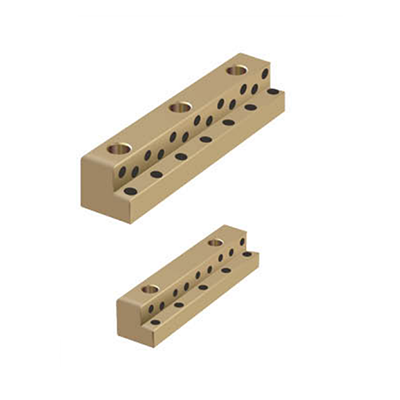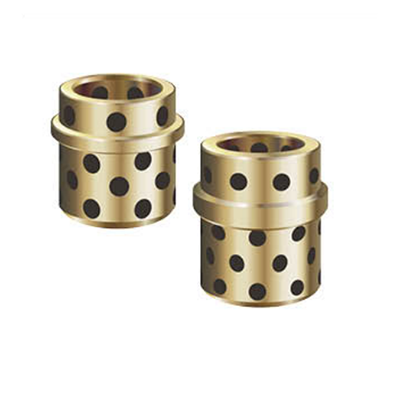1. Limitations and maintenance challenges of traditional lubrication systems
In many industrial equipment, the lubrication system is a key factor in ensuring the long-term and stable operation of the equipment. Especially in high temperature and high load environments, the consumption and deterioration of lubricating grease accelerates, and traditional lubrication systems often require frequent inspection and replenishment of lubricating oil. During the operation of the equipment, especially under high temperature and high load conditions, the consumption of lubricating oil accelerates, and the lubrication effect gradually decreases. In order to ensure that the equipment is always in the best working condition, it is often necessary to regularly check and replace the lubricating oil, which not only increases the complexity of equipment maintenance, but also may cause equipment downtime and reduced production efficiency. In addition, traditional lubrication systems require external lubricating oil or grease, and if leakage or failure occurs, it will also cause potential harm to the equipment and the environment. For a long time, this reliance on external lubricating grease has brought tremendous pressure to equipment maintenance, especially when the equipment is in long-term operation, frequent operation or operation under extreme conditions, the maintenance needs of the equipment will be more frequent and complex.
2. Self-lubricating flanged bushes’ self-lubricating advantages
The core advantage of self-lubricating flanged bushes lies in their self-lubricating function, which comes from their internal lubricating materials. Unlike traditional lubrication systems that rely on external lubricating grease, self-lubricating flanged bushes can automatically release lubricants through their internal lubricating components during operation to maintain lubrication without external lubricating oil replenishment. Through this self-lubricating mechanism, self-lubricating flanged bushes can significantly reduce dependence on traditional lubricating grease, thereby reducing the maintenance frequency of the lubrication system. The lubricating materials of self-lubricating flanged bushes usually have a long service life and can work stably under high temperature and high load environments. Even under extreme working conditions, self-lubricating flanged bushes can continue to provide effective lubrication, reducing equipment damage, wear or failure caused by insufficient lubrication. This feature not only improves the reliability of the equipment, but also greatly simplifies the maintenance process of the equipment.
3. Reduce maintenance costs and optimize equipment operation efficiency
With the application of self-lubricating flanged bushes, the maintenance costs required for traditional lubrication systems have been significantly reduced. Since the internal lubricating material of the self-lubricating flanged bushing can automatically provide lubrication during the operation of the equipment, the equipment does not need to be frequently refueled or replaced with lubricating grease, thereby reducing the need for manual intervention. In addition, since the risk of lubricating grease leakage is reduced, the cleanliness of the equipment is improved and environmental pollution is greatly reduced. Reducing dependence on external lubricating grease allows Self-lubricating flanged bushes to not only reduce maintenance frequency, but also significantly save maintenance costs and labor costs. More importantly, since the equipment maintains a stable lubrication effect during long-term operation, the equipment failure rate is reduced and downtime is reduced, thereby improving the equipment's work efficiency. Industrial equipment often needs to operate for a long time and stably, and self-lubricating flanged bushings ensure that the equipment can still maintain efficient operation under high load and high temperature environments through their long-lasting lubrication function.
4. Extend the service life of equipment and reduce the risk of failure
The service life of equipment is closely related to the performance of the lubrication system. Traditional lubrication systems need to rely on external lubricating grease to maintain lubrication. Once the lubricating grease is insufficient or leaks, the parts of the equipment will face extremely high wear risks, and may even lead to premature scrapping of the equipment. Self-lubricating flanged bushes, due to their built-in lubrication function, can maintain good lubrication without external lubricating grease, thereby significantly reducing the wear and damage of equipment parts. Self-lubricating sleeves can ensure that the equipment still maintains a stable lubrication effect during long-term operation, reducing mechanical failures caused by insufficient lubrication. For example, in high-load or high-temperature environments, Self-lubricating flanged bushes can effectively maintain the lubrication of internal parts of the equipment, prevent part failure or damage caused by excessive wear, thereby greatly extending the service life of the equipment.
5. Reduce downtime and improve production efficiency
Downtime is an important cost in industrial production. When equipment fails or needs maintenance, downtime directly affects production efficiency, resulting in a decrease in corporate productivity. Traditional lubrication systems often require regular inspections, replacement of lubricating grease, and repair of faults caused by insufficient lubrication. These tasks not only increase downtime, but also reduce the production efficiency of the equipment. The self-lubricating function of self-lubricating flanged bushes effectively reduces the dependence on traditional lubricating grease, and due to the long-lasting performance of lubricating materials, the equipment does not need to be frequently shut down for maintenance. This not only reduces the number of downtimes during production, but also improves production efficiency. The equipment can continue to operate efficiently under harsh conditions such as high load and high temperature, reducing production losses caused by downtime, thereby improving the overall production efficiency and economic benefits of the enterprise.

 English
English Español
Español


